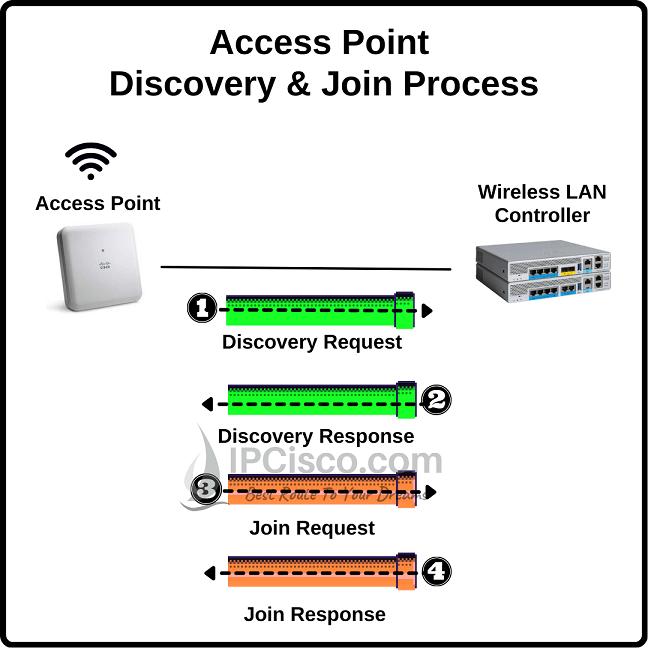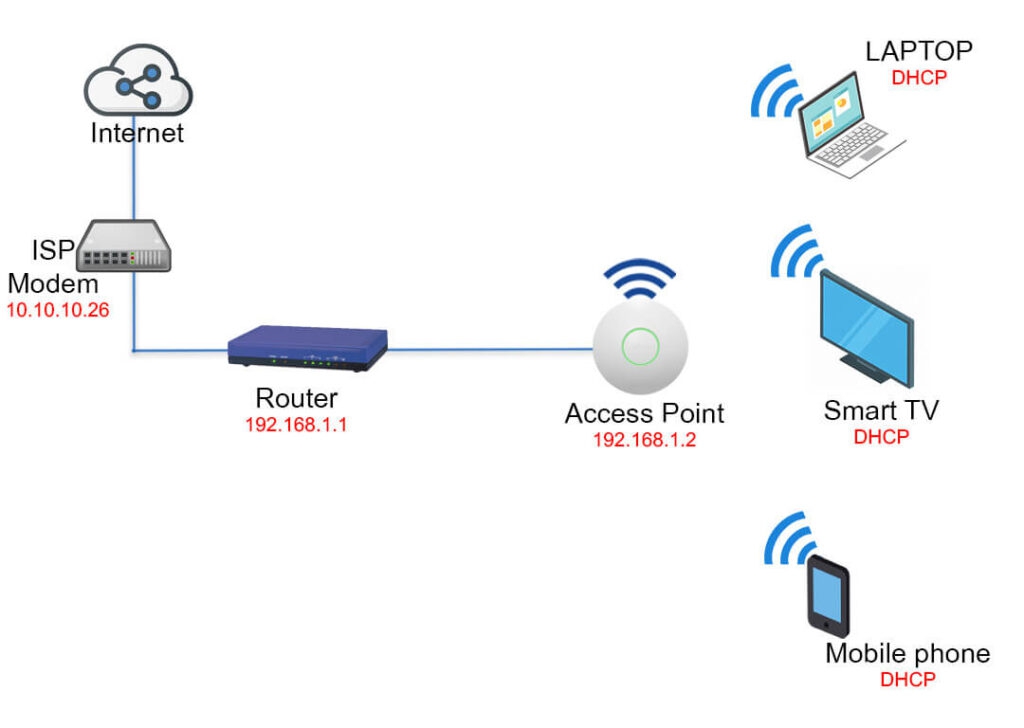Outrageous Tips About Can I Connect An Access Point To Another

Unlocking Wireless Potential
1. Understanding the Possibilities
Ever wondered if you could simply extend your Wi-Fi range by linking one access point (AP) to another? It's a common question, and thankfully, the answer is generally yes! Connecting access points can be a fantastic way to blanket a larger area with a strong, reliable wireless signal. Think of it like creating a wireless web that covers your entire property, eliminating those dreaded dead zones where your connection mysteriously vanishes.
But before you rush out and buy a second access point, it's important to understand the different methods and considerations involved. It's not always as simple as plugging things in and hoping for the best. Proper planning and configuration are key to achieving a seamless and robust wireless network. So, let's dive into the various ways you can achieve this, and what to keep in mind along the way.
Why would you even want to do this? Well, perhaps your existing router just can't reach the far corners of your house, your backyard, or maybe even a separate building on your property. Or maybe you're experiencing frustratingly slow speeds due to congestion on a single access point. Adding another AP can alleviate these issues, distributing the load and providing better performance for all your connected devices. Its like adding more lanes to a busy highway — everyone moves a little faster!
Think of it like this: your main router is the headquarters, and the additional access point is an outpost, relaying information and expanding the reach of the wireless network. When done right, it's a beautiful thing. But a poorly implemented setup can lead to frustration and headaches. Trust me, I've been there!

Set Wifi Access Point At Neal Henn Blog
Bridging the Gap
2. Choosing the Right Approach
There are a few main ways to connect access points together, each with its own set of pros and cons. The most common methods are using an Ethernet cable, employing Wireless Distribution System (WDS), or utilizing a mesh network system.
Ethernet Backhaul: The Reliable Workhorse. This is often the preferred method, as it provides the most stable and reliable connection. You simply run an Ethernet cable from your main router to the second access point. This creates a dedicated wired link, minimizing interference and maximizing bandwidth. It's like having a direct pipeline for your data! The downside, of course, is that it requires running a cable, which can be challenging or unsightly in some situations. But if you can manage it, it's usually the best option.
Wireless Distribution System (WDS): Cutting the Cord. WDS allows access points to communicate wirelessly, without the need for Ethernet cables. This can be a convenient option if running cables is difficult or impossible. However, WDS can often reduce your overall bandwidth, as the access points need to use some of their wireless capacity to communicate with each other. Imagine trying to have a conversation in a crowded room — it's not always the clearest! Also, WDS compatibility can sometimes be finicky, so it's important to ensure that your access points support it and are configured correctly.
Mesh Networks: The Smart Solution. Mesh networks are a more recent technology that's designed to make extending your Wi-Fi network as easy as possible. Mesh systems typically consist of a main router and several satellite nodes that communicate wirelessly. They're designed to be plug-and-play, automatically configuring themselves and optimizing performance. This is like having a team of experts setting up your network for you! Mesh networks are generally more expensive than traditional access points, but they offer a simpler and more robust solution for many users.

Configuration is Key
3. Navigating the Settings
Once you've chosen your connection method, the next step is to configure your access points. This typically involves accessing the web interface of each device and adjusting settings such as the SSID (network name), password, and channel. It's like giving each access point its marching orders!
Same SSID, Roaming Like a Pro. If you want your devices to seamlessly roam between access points, you'll typically want to use the same SSID and password on both. This allows your devices to automatically connect to the strongest signal as you move around. However, it's important to choose a channel for each access point that doesn't overlap with other nearby networks. This can help to avoid interference and improve performance. Think of it like coordinating traffic signals to keep cars moving smoothly.
DHCP and IP Addresses: Avoiding Conflicts. Ensure that only one of your access points is acting as a DHCP server. This is the service that assigns IP addresses to devices on your network. If you have multiple DHCP servers running, it can lead to conflicts and connectivity issues. Typically, you'll want your main router to handle DHCP, and disable it on the secondary access point. Also, make sure that each access point has a unique IP address on your network. This will prevent conflicts and ensure that you can access the web interface of each device.
Firmware Updates: Keeping Things Fresh. Always make sure that your access points are running the latest firmware. Firmware updates often include bug fixes, performance improvements, and security patches. Keeping your firmware up-to-date is like giving your access points a regular check-up to keep them running smoothly and securely.

Troubleshooting Tips
4. Solving Common Problems
Even with careful planning and configuration, you might still encounter some challenges when connecting access points. Here are a few common issues and how to troubleshoot them.
Slow Speeds: Identifying the Bottleneck. If you're experiencing slow speeds, the first step is to identify the bottleneck. Is it the connection between the access points? Is it the internet connection itself? Run speed tests on different devices and in different locations to pinpoint the source of the problem. If the issue is with the wireless connection between access points, try changing the channel or moving the access points closer together. If it's the internet connection, contact your internet service provider.
Intermittent Connectivity: Diagnosing Drops. If your connection is dropping frequently, it could be due to interference, a weak signal, or a faulty access point. Try moving the access points away from sources of interference, such as microwave ovens or cordless phones. Check the signal strength on your devices to ensure that you're getting a strong signal from the nearest access point. If you suspect a faulty access point, try resetting it to factory defaults or replacing it altogether.
Device Compatibility: Addressing Connection Issues. Some older devices may not be compatible with newer Wi-Fi standards or security protocols. If you're having trouble connecting a particular device, try updating its drivers or firmware. You may also need to adjust the security settings on your access point to support older devices. However, be aware that using older security protocols can make your network more vulnerable to attack.Remember, patience is key! Troubleshooting network issues can sometimes be frustrating, but with a little persistence and a methodical approach, you can usually resolve the problem.

How To Setup A Wireless Access Point? NetraClos Inc.
Making the Connection
5. Weighing the Pros and Cons
So, is connecting access points the right solution for you? It depends on your specific needs and circumstances. If you're looking to extend your Wi-Fi range without running cables, WDS or a mesh network might be a good option. If you need the most reliable and highest-performance connection, Ethernet backhaul is the way to go. Consider the size of your area, the number of devices you need to support, and your budget when making your decision.
Think of it like choosing a car: a small, fuel-efficient car might be perfect for commuting, but you'll need a larger, more powerful vehicle for hauling cargo or driving off-road. Similarly, a simple access point setup might be sufficient for a small apartment, but you'll need a more robust solution for a large house or business.
Ultimately, the goal is to create a wireless network that meets your needs and provides a reliable and enjoyable experience. By carefully considering your options and following the tips outlined above, you can achieve a wireless setup that works perfectly for you. And don't be afraid to experiment! Networking is as much an art as it is a science, and you might be surprised at what you can achieve with a little bit of tinkering.
Remember, a strong and stable Wi-Fi connection is essential in today's world. It's the foundation for everything from streaming movies to working from home. So, take the time to set up your network properly, and you'll be rewarded with a seamless and reliable wireless experience.

FAQ
6. Quick Solutions to Common Queries
Still have some burning questions? Let's tackle a few frequently asked questions about connecting access points.
Q: Can I mix and match different brands of access points?
A: While it's generally recommended to use access points from the same brand for better compatibility, it's not always necessary. However, if you're using WDS, it's crucial to ensure that both access points support the same WDS standard. Mesh networks often require using the same brand and model of nodes.
Q: How many access points can I connect together?
A: The number of access points you can connect depends on the capabilities of your router and the access points themselves. Most home routers can support at least a few access points. However, for larger networks, you might need a more powerful router or switch.
Q: Will adding more access points improve my internet speed?
A: Adding more access points won't necessarily increase your overall internet speed. Your internet speed is limited by your internet service provider. However, adding more access points can improve the performance of your wireless network by distributing the load and reducing congestion. This can result in faster speeds for individual devices.